|
The Leipzig Academy of Visual Arts has blossomed into one of the most exciting locations for photographers in Germany—and is exhibiting nationwide self-consciousness in the process.Whereas once the city coughed in the thick smog of East German industry, those clouds have slowly lifted over Leipzig. Likewise, the public attention on painting from the Leipzig Art Academy has somewhat obscured a differentiated view of the city as an excellent microclimate for photography as well. A lively photography scene is becoming visible that has existed around the Leipzig Academy of Visual Arts (Hochschule für Grafik und Buchkunst, or HGB) at least since the 1980s. Previous instructors of note include Arno Fischer and Evelyn Richter; later graduates include Tina Bara and Gundula Schulze-El Dowy. When their unpretentious, often socially critical human photography, a survey of late and post- socialist conditions, eventually succumbed to existential crisis and clashed with the powerful Düsseldorf School, a new stance needed to be taken.Among those who turned away from the Cartier-Bresson “decisive moment,” to concentrate on objective architectural studies, is Matthias Hoch, a photographer known today for isolated city fragments that he employs to investigate the interchangeability of large European cities. In the 1990s, Hoch was one of the first to abandon the black and white image out of hand. An assistant at the HGB from 1993 to 1998, he blazed the trail for a new point of view. And his colleague Hans Christian Schink, who graduated in 1991, took up the observation of objective, sterile counterfeits present on the outskirts of town and came to be known for his precise observation of the “Umbau Ost,” or “Renovation of the East.” His concrete, cumbersome cycle Traffic Projects of German Unity (Verkehrsprojekte deutsche Einheit) has practically become a classic among recent generations of photographers. At the beginning of the 1990s, two photo artists, Timm Rautert and Joachim Brohm, answered their callings in Leipzig and refocused the lenses of the students there, making it increasingly one of the most important establishments for relevant learning in the visual arts. Brohm, who was one of the first German photographers in the 1980s to dedicate himself to the sallow colors of unspectacular, marginal cultural spaces (preferring the northwest Ruhr region), rendered this interest into his personal doctrine. Parallel to this, with his omnibus volume AREAL that was more than ten years in the making, he created a historical document about a Munich industrial area affected by upheaval. In this same spirit his students carefully examine the city and its outskirts while simultaneously exploring the subversive power of these locations to shape identity. The best example of this is the 2002 publication of ‘psychoscape,’ a document that addresses altered understandings of urbanity and landscape. Since 2003, Joachim Brohm has been rector in Leipzig and has exposed his studio classes to a program including guest lecturers such as Canadian photo artist Roy Arden or conceptual suburban researcher Boris Sieverts. He sends students on expeditions into the dimly-lit outskirts of the city, landscapes impacted by industry and urban wildernesses, of which there are many in post-socialist Leipzig. Corresponding to the theme, Brohm’s proteges’ presentations—with few exceptions—frequently take on a brittle and architecturally heavy tone. As a considerable enrichment in color, Boris Mikhailov appeared on the Leipzig scene in 2002. Invited by his colleague Helfried Strauss, the man from Kharkov (Ukraine) accepted a one-year German Academic Exchange Service lectureship, to which willing learners from all classes were invited to attend. Mikhailov by his own admission had difficulties at the beginning—seeing a lack of initiative in his own students and feeling ill-at-ease in the commercially styled surfaces of the new East-West reality. Moreover, he had the feeling that his own creative powers were suffering beneath the sheer overabundance of pictures: “What else is there to photograph here?” he complained at the time and yet: at the end of his year he offerered a glaring panorama, mostly of Berliners living on the margins of existence, that had its German premiere at the HGB gallery.At the same time, he proudly presented the results of his students’ work from the previous twelve months. Not surprisingly, a large number of motifs was dominated by the human body. In the center of this selection were the results of a study trip to Odessa, during which the ice was finally broken that had separated the melancholic, yet humorous Ukrainian from the young Germans. Today, this trip to the Crimea has become legendary at the Leipzig Academy and ever increasing numbers of Ukrainian beach and daily life motifs are still making the rounds at the academy. The fingerprints of the master, and not only in Mikhailov’s case, are sometimes quite prevalent—even if more or less cleverly transformed—in students’ pictures. Timm Rautert is one man whose influence on his students and graduates is difficult to detect, whether in style or motif. It does shine through, however, in their enormous eloquence and in engaging discussions. In this class, recent photographic history is diligently knocked off its pedestal by new possibilities. This creates an environment more conducive to a sense of conceptual experimentation and truly characterizes the nature of this studio and master class. The energetic professor, along with his current assistant Florian Ebner, nurtures the idea of the “Rautert student” in a focused way, issuing a kind of stamp of approval and regularly sending his students’ pieces on tour. In 2003, the show Silver and Gold constituted a beginning, presenting the work of the professor and 14 of his students in four venues throughout Germany. This was followed shortly thereafter by the Kalte Herzen (Cold Hearts) initiative, now including 33 participants, which is currently on tour and is also being shown in Poland and in the UK. Such an undertaking is always accompanied in a commercially calculating way by a noble ‘edition’—and it is here that works are offered for low prices and are used to cover the running costs of the show, to a certain extent. Without a doubt, the mentor’s excellent personal contacts with publishers such as Steidl, Schaden or Walther König, where the publications are printed, are quite helpful. While other classes may have wrinkled their noses at the Rautert group’s collective actionism, in the meantime all this activity has had the positive effect of creating an impetus and enlivening the climate in the photography faculty (and ultimately across all academic departments). The motto “Be present!” has been coined by this group of young photographers and is a good motto for survival in the real world, even if the quantity of unrestrained representations of the self initially has somewhat exceeded the target, as it were. And it was hardly without justification that the Rautert class recently portrayed itself as a highly heterogeneous herd of domesticated and wild animals on a red wall as a baroque wall hanging; an implied plea for protection as an endangered species, perhaps? Not only Leipzig insiders have taken notice of the group’s success—with a honed hunter’s instinct the Berlin/Leipzig Eigen + Art gallery owner Judy Lybke has picked over the most interesting prospects roaming about in the Leipzig HGB habitat. Most recently this applied to the young photographer Ricarda Roggan, who impressively portrays the unfolding GDR past with her spartan furniture scenarios. In the summer last year, Lybke even surrendered his entire gallery for nine weeks to a handful of graduates who presented under their own direction the show Just Good News for People Who Love Bad News. Falk Haberkorn and Sven Johne were two of the ten who had work on display. Both planned an artistic collaboration at the time, drawing from a photographic trip through the autumnal east German countryside in 2004. It might have been clear to them from the beginning, however, that shows of the Eigen + Art type would be few and far between, with a good amount of time having passed from cooperative school ventures such as Silver & Gold and self-help becoming the rule of the day. Strengthened by the successful model of artists’ galleries that were given life by the LIGA artists and taken up by Echolot and Rekord in Berlin, Haberkorn and Johne along with former fellow student Frank Berger decided to dare to move straight into public exhibitions and hopefully into the art market. As in the case of their predecessors, Judy Lybke is operating behind the scenes—providing moral support and a guaranteed network of connections—and certainly not without a certain degree of calculation. After all, one or the other of the artists being “promoted” here could sooner or later join the Eigen + Art gallery—just as happened in the case of some painters of the LIGA enterprise. For the time being, of course, no one is talking about that, for the groundwork has only just been laid. Initially, 20 Leipzig-based photographers and other artists came together who had the will and were in a position to pool the not insubstantial sum of 1500 Euros for the newcomers. The next step was to invite potential gallery owners to an interview—something that proved a somewhat absurd situation for them, as Falk Haberkorn recalls. The selection ultimately fell to Cultural Manager Sebastian Klemm who, to nobody‘s surprise, had not only concluded a long internship at Eigen+Art but was also educated as an economist. After all, the whole operation is expected to hit the mark over the next 24 months. The pieces set to premiere here, beginning in March, are not always easy to digest and, for that matter, not particularly marketable. No one wants to repudiate their intellectual, discussion-friendly Leipzig photography education, but counts on developing a profile of socially committed and critical art. Sebastian Klemm views both the ever present pressure to produce good works and the accompanying commercial expectations with professional pragmatism and illusionless joviality. One of the first things he did was to find appropriate space in Berlin’s Brunnenstrasse. Then the name of the new gallery was discussed. And because one of the artists had just read Kafka’s novel fragment Amerika, they decided on that name—with emphasis on the alienating factor of the hard ‘K’. The name was meant to convey the joy of discovery, unbridled optimism, entrepreneurial spirit and a bit of cautious self-irony. In the 100 square meter nucleus, biannual group shows will take place, otherwise, carefully choreographed co-exhibitions. In spite of all the restrictions on photographic themes, it can be entertaining, too, of course. Sculpture and installations are also part of this effort—featuring some prominent names known not only in Leipzig, including Alexei Meshtshanov and Andreas Grahl, all of whom are along for the ride on this fictional trans-Atlantic trip.To be sure, certain select professors who the twenty have been brought up by in the last few years are quite pleased at the initiative of the HGB graduates and masters’ students. These include Timm Rautert, the ultimate driving force, along with Astrid Klein and Joachim Brohm. If everything goes well, another accolade will be heaped on Leipzig as an outstanding bastion of art training. Or, as Amerika’s co-founder Sven Johne puts it, “Why shouldn’t we embrace the ‘Leipzig’ label, as long as it’s still working?”
Recommended articles

|
|
“A person must shake someone’s hand three times while gazing intently into their eyes. That’s the key to memorizing their name with certainty. It is in this way that I’ve remembered the names of 5,000 people who have been to the Horse Hospital,” Jim Hollands told me. Hollands is an experimental filmmaker, musician and curator. In his childhood, he suffered through tough social situations and…
|

|
|
An American poet was invited to the White House in order to read his controversial plagiarized poetry. All tricked out and ready to do it his way, he comes to the “scandalous” realization that nothing bothers anyone anymore, and instead of banging your head against the wall it is better to build you own walls or at least little fences.
|

|
|
Goff & Rosenthal gallery, Berlin, November 18 - December 30, 2006
Society permanently renegotiates the definition of drugs and our relationship towards them. In his forty-five minute found-footage film The Conquest of Happiness, produced in 2005, Oliver Pietsch, a Berlin-based video artist, demonstrates which drugs society can accommodate, which it cannot, and how the story of the drugs can be…
|

|
|
Why political intellectuals, do you incline towards the proletariat? In commiseration for what? I realize that a proletarian would hate you, you have no hatred because you are bourgeois, privileged, smooth-skinned types, but also because you dare not say that the only important thing there is to say, that one can enjoy swallowing the shit of capital, its materials, its metal bars, its polystyrene…
|
|








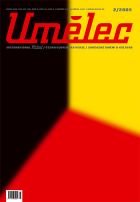


















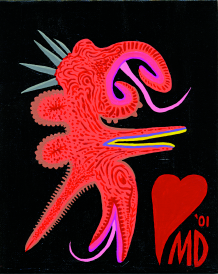




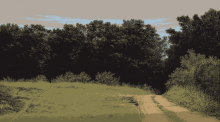

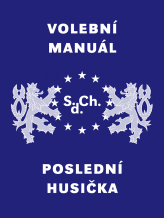
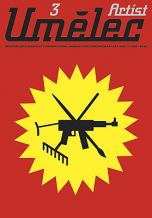


 New book by I.M.Jirous in English at our online bookshop.
New book by I.M.Jirous in English at our online bookshop.
Comments
There are currently no comments.Add new comment